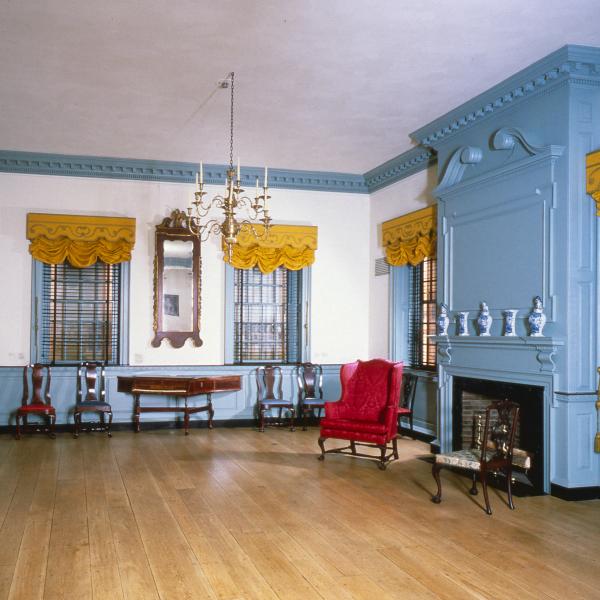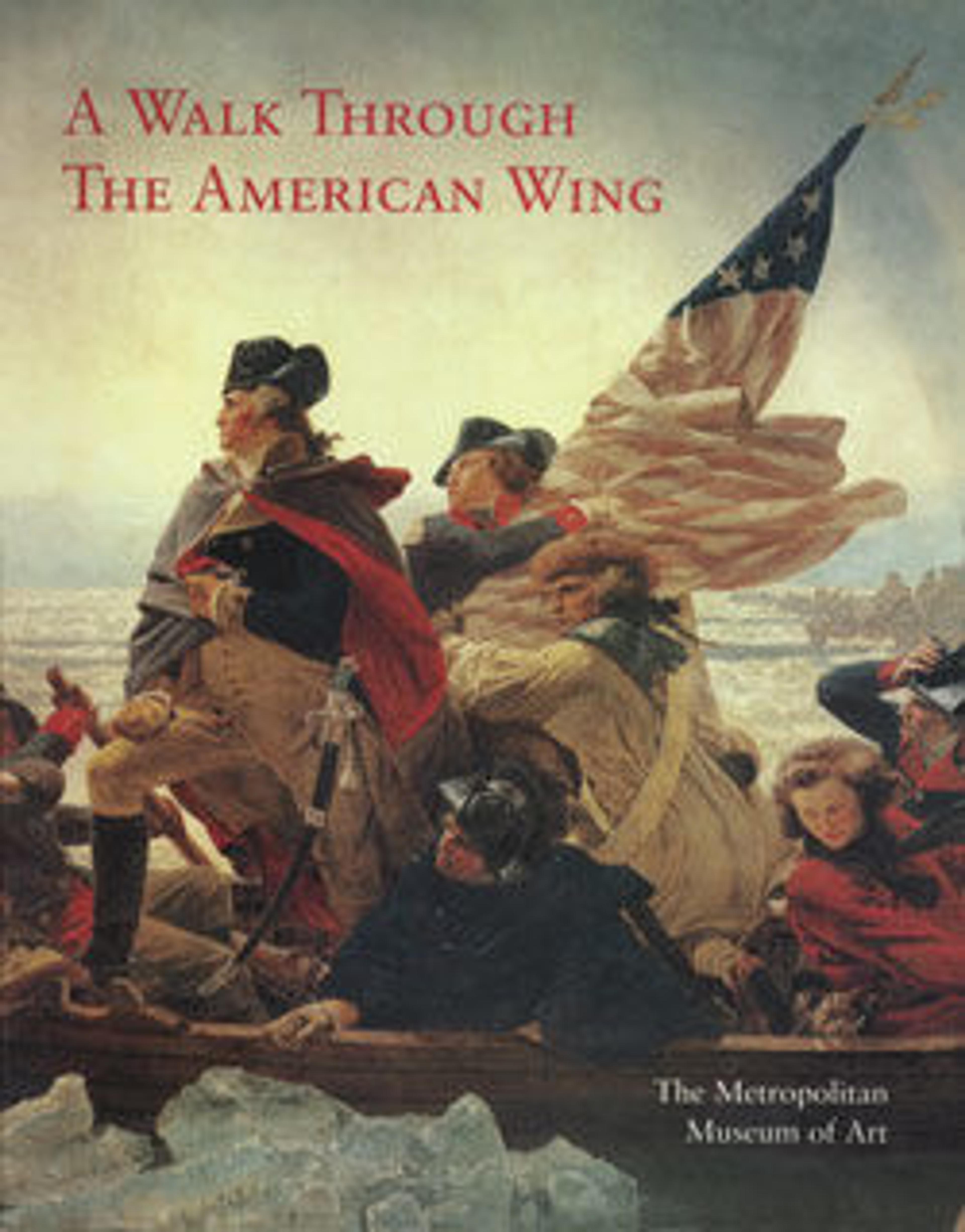Panel from the Ballroom at Gadsby's Tavern, Alexandria, Virginia
The rich woodwork from the ballroom of Gadsby's Tavern reflects the continuation of the Georgian decorative tradition into the early Federal period. Constructed in 1792–93, the ballroom originally stood on the second floor of the Federal-style City Tavern and Hotel. It was one of the most refined public spaces in Alexandria, Virginia. In 1798 and 1799, George Washington celebrated his birthnight balls at the tavern. During his 1824–25 tour of the United States, the marquis de Lafayette spent several days there.
Tavern ballrooms like the one at Gadsby's were multipurpose, flexible spaces that received a great deal of wear. Often the most elegant room in an establishment, they played host to balls, concerts, lectures, club meetings, and other large gatherings. An 1802 inventory of this ballroom reveals objects related to lighting—chandeliers, looking glasses—and heat—fireplace implements. Seating, dining, or other furniture could be brought in or taken out as the situation dictated.
Though it was the site of refined entertainments, the whitewashed walls and chair-rail-high dados reflected the practical side of the room's prominence. Higher up, away from the scuffs and kicks of hands and feet, the room's richly carved ornament is ordered, almost perfectly symmetrical, and reflects the principals and motifs of Georgian decoration despite its late date. The scrolled pediments over the doors and mantles, the crossetted moldings that embellish the doorways, windows, and mantles, the fretwork chair rail, and the dentil-molded cornice are similar to examples popularized by English pattern books of the 1740s and 1750s. The room's two chimney-breasts are a simplified version of Plate L from Abraham Swan's The British Architect (1758). Though Swan was most popular in the colonies in the period preceding the Revolution, his classically inspired designs adhering to the tenets of Georgian decoration remained in use in the decades following independence.
Tavern ballrooms like the one at Gadsby's were multipurpose, flexible spaces that received a great deal of wear. Often the most elegant room in an establishment, they played host to balls, concerts, lectures, club meetings, and other large gatherings. An 1802 inventory of this ballroom reveals objects related to lighting—chandeliers, looking glasses—and heat—fireplace implements. Seating, dining, or other furniture could be brought in or taken out as the situation dictated.
Though it was the site of refined entertainments, the whitewashed walls and chair-rail-high dados reflected the practical side of the room's prominence. Higher up, away from the scuffs and kicks of hands and feet, the room's richly carved ornament is ordered, almost perfectly symmetrical, and reflects the principals and motifs of Georgian decoration despite its late date. The scrolled pediments over the doors and mantles, the crossetted moldings that embellish the doorways, windows, and mantles, the fretwork chair rail, and the dentil-molded cornice are similar to examples popularized by English pattern books of the 1740s and 1750s. The room's two chimney-breasts are a simplified version of Plate L from Abraham Swan's The British Architect (1758). Though Swan was most popular in the colonies in the period preceding the Revolution, his classically inspired designs adhering to the tenets of Georgian decoration remained in use in the decades following independence.
Artwork Details
- Title: Panel from the Ballroom at Gadsby's Tavern, Alexandria, Virginia
- Date: 1792–93
- Geography: Made in Alexandria, Virginia, United States
- Culture: American
- Medium: Wood
- Dimensions: 13 ft. 9 in. x 24 ft. 2 1/2 in. x 50 ft. 9 1/2 in.
- Credit Line: Rogers Fund, 1917
- Object Number: 17.116.1
- Curatorial Department: The American Wing
Audio

Episode 6: If You Have to Be a Floor
0:00
0:00
We're sorry, the transcript for this audio track is not available at this time. Please email info@metmuseum.org to request a transcript for this track.
More Artwork
Research Resources
The Met provides unparalleled resources for research and welcomes an international community of students and scholars. The Met's Open Access API is where creators and researchers can connect to the The Met collection. Open Access data and public domain images are available for unrestricted commercial and noncommercial use without permission or fee.
To request images under copyright and other restrictions, please use this Image Request form.
Feedback
We continue to research and examine historical and cultural context for objects in The Met collection. If you have comments or questions about this object record, please complete and submit this form. The Museum looks forward to receiving your comments.
